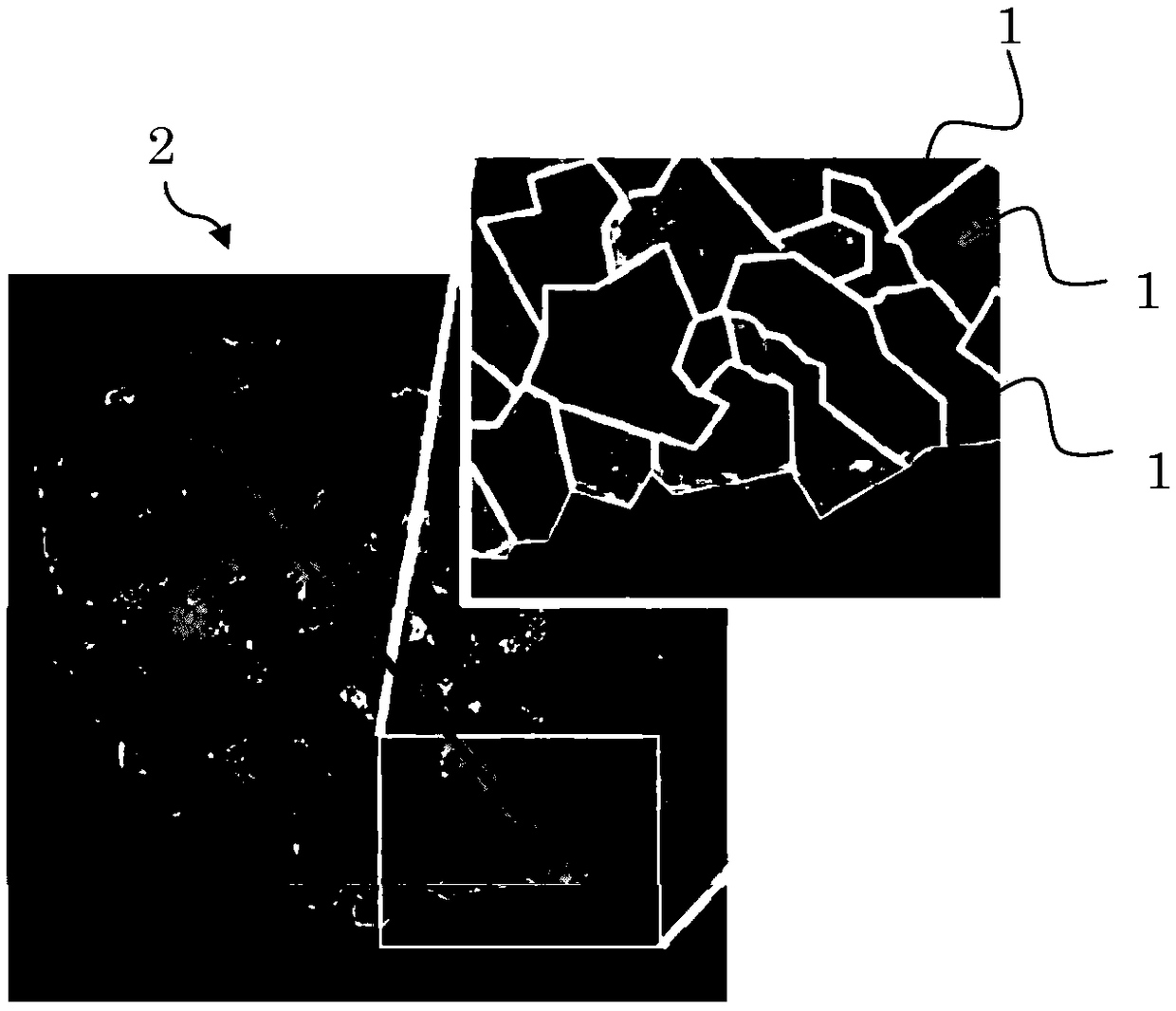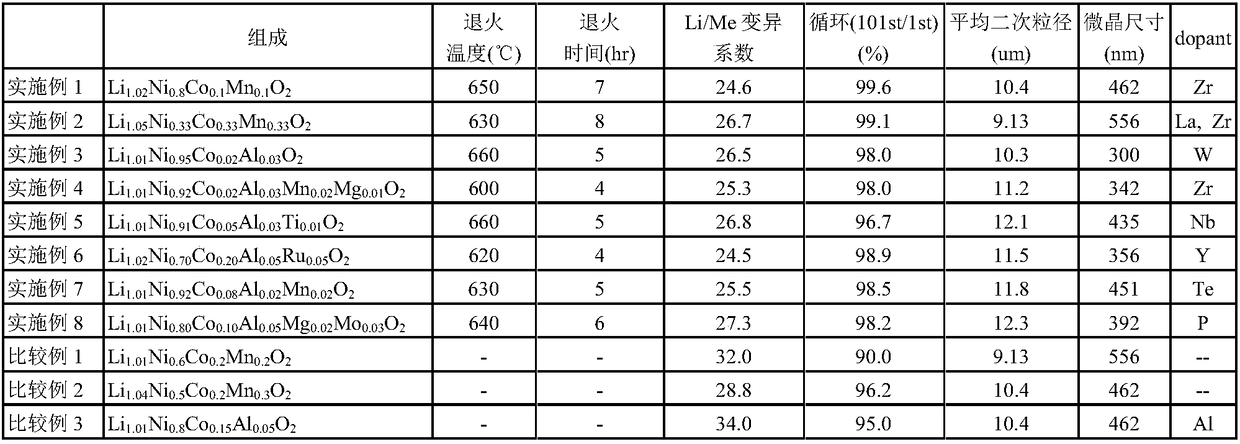Positive electrode active material for nonaqueous electrolyte secondary batteries, method for producing same, and nonaqueous electrolyte secondary battery using same
A positive electrode active material and non-aqueous electrolyte technology, applied in the field of non-aqueous electrolyte secondary batteries, can solve the problems of damage performance, electrode density drop, battery performance drop, etc., achieve stable charge and discharge, inhibit grain boundary precipitation, and reduce deterioration Effect
- Summary
- Abstract
- Description
- Claims
- Application Information
AI Technical Summary
Problems solved by technology
Method used
Image
Examples
Embodiment 1
[0079] An aqueous sodium hydroxide solution having a pH of 12.0 was prepared in a reactor equipped with a blade stirrer. Aqueous ammonia solution was dropped thereinto so that the ammonia concentration became 0.80 mol / l. A mixed aqueous solution of nickel sulfate, cobalt sulfate, and manganese sulfate was continuously supplied to the reactor at a composition ratio of Ni / Co / Mn=0.8 / 0.1 / 0.1. During this period, an aqueous sodium hydroxide solution and an aqueous ammonia solution were continuously supplied so that the pH of the reaction solution reached 12, the ammonia concentration reached 0.8 mol / l, and the particles grew to the target average secondary particle size. During this period, spherical composite transition metal precipitates were obtained by applying mechanical shear force to the suspension.
[0080] After the reaction, the taken-out suspension was washed with water by a filter press, and then dried at 150° C. for 12 hours to obtain nickel-cobalt-manganese compound ...
Embodiment 2
[0087] The composition ratio of the precursor was changed to Ni / Co / Mn=1.0 / 1.0 / 1.0, Li raw material, transition metal mixed spherical oxide, ZrO 2 , and La 2 o 3 The mixture was calcined at 850° C. for 10 hours in an oxidizing atmosphere, and then heat-treated at 630° C. for 8 hours in an air atmosphere as an annealing treatment. The calcined product after the annealing treatment was crushed to obtain positive electrode active material powder. Except for this, a positive electrode active material was obtained in the same manner as in Example 1.
[0088] The variation coefficient of Li / M including crystals and grain boundaries was 26.7% after elemental distribution analysis using NanoSIMS in the cross section of the grains. In addition, it was confirmed that Zr coexists at grain boundaries where the Li concentration is high.
[0089] As an auxiliary measurement, high-resolution TEM is used to analyze multi-wavelength interference patterns and selected area electron diffracti...
Embodiment 3
[0092]An aqueous sodium hydroxide solution having a pH of 12.0 was prepared in a reactor equipped with a blade stirrer. Aqueous ammonia solution was dropped thereinto so that the ammonia concentration became 0.80 mol / l. A mixed aqueous solution of nickel sulfate, cobalt sulfate, and sodium aluminate was continuously supplied to the reactor. During this period, an aqueous sodium hydroxide solution and an aqueous ammonia solution were continuously supplied so that the pH of the reaction solution reached 12, the ammonia concentration reached 0.8 mol / l, and the particles grew to the target average secondary particle size. During this period, spherical composite transition metal precipitates were obtained by applying mechanical shear force to the suspension.
[0093] After the reaction, the taken-out suspension was washed with water by a filter press, and then dried at 150° C. for 12 hours to obtain nickel-cobalt-aluminum compound particles (nickel-cobalt-aluminum composite hydrox...
PUM
| Property | Measurement | Unit |
|---|---|---|
| size | aaaaa | aaaaa |
| particle size | aaaaa | aaaaa |
| particle size | aaaaa | aaaaa |
Abstract
Description
Claims
Application Information
 Login to View More
Login to View More - R&D
- Intellectual Property
- Life Sciences
- Materials
- Tech Scout
- Unparalleled Data Quality
- Higher Quality Content
- 60% Fewer Hallucinations
Browse by: Latest US Patents, China's latest patents, Technical Efficacy Thesaurus, Application Domain, Technology Topic, Popular Technical Reports.
© 2025 PatSnap. All rights reserved.Legal|Privacy policy|Modern Slavery Act Transparency Statement|Sitemap|About US| Contact US: help@patsnap.com


